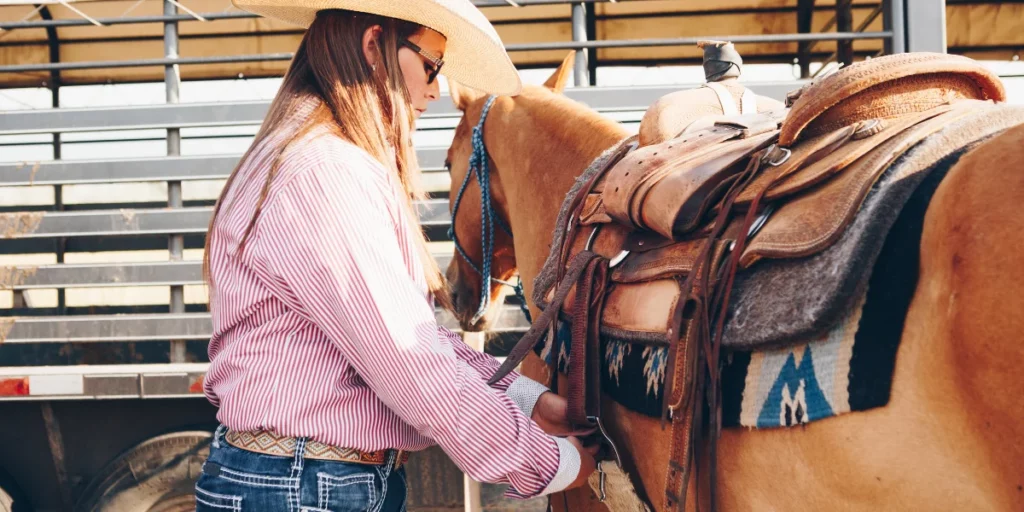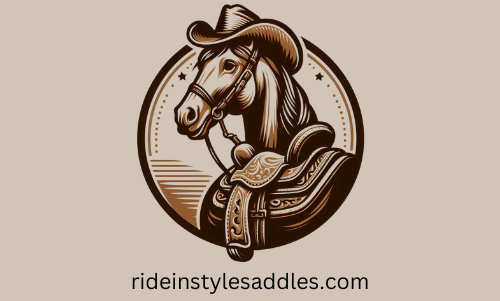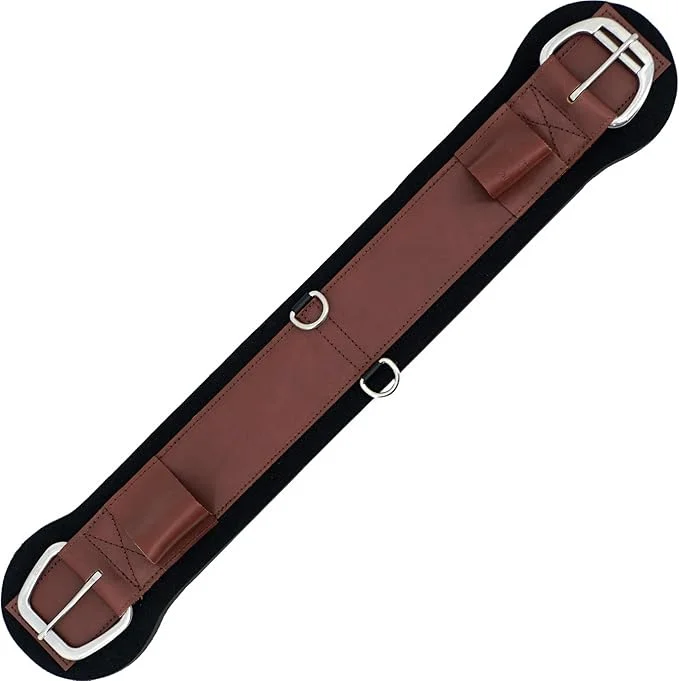
What is a Cinch?
Whether you’re a seasoned rider or just starting out, choosing the right cinch is crucial for both your comfort and your horse’s well-being. In this blog, we’ll explore what cinches are, the different types available, and how to select the best one for your riding style and needs. Let’s dive into the world of cinches and help you make an informed choice!
A cinch is a crucial piece of equestrian tack, sitting silently but faithfully under the horse’s belly and securing the saddle in place. It’s that unassuming strap that connects rider and horse, ensuring safety and balance. In the world of horse riding, a cinch doesn’t just play a supporting role—it’s the leading actor in ensuring a secure and comfortable ride.
For centuries, we have relied on various forms of this tool to bind saddles to horses’ backs. From leather strips to modern hybrid designs, the evolution of cinches highlights their importance in equestrian history. It’s actually quite fascinating to see how they’ve changed and adapted throughout the years.
Breaking down the anatomy of a cinch, you’ll typically find a straightforward structure, it’s a strap or belt that wraps around the horse’s girth. But don’t let its simplicity fool you.
The design is vital for distributing pressure evenly, preventing soreness, and ensuring the horse is comfy. Get it wrong, and you’re looking at an unhappy horse and potentially a fallen rider, which is never the plan.
As you know, when it comes to riding, comfort is key. A well-fitting cinch keeps the saddle in place as well as ensuring your horse feels at ease, which leads to a better experience for both of you. Afterall comfortable horses are more responsive and energetic, so picking the right cinch is as much about you as it is about your four legged friend.
Types of Cinches and Their Uses
Here, we’ll take a look at the variety of cinches out there, each offering unique benefits to suit different riding styles and needs.
The Wool Felt Cinch is a classic favorite, known for its soft, breathable qualities. Perfect for those long rides or horses with sensitive skin, offering superior comfort and moisture-wicking properties. It’s the go-to for those leisurely, laid-back days in the saddle.
The Neoprene Cinch is a rising star, celebrated for its durability and versatility. Easy to clean and maintain, it’s ready to tackle wet conditions and wrap snugly around your horse like no other. Trail riders often swear by it not only for it’s dependable fit but it’s resistance to wear and tear.
The Mohair Cinch brings the strength and elasticity needed for endurance rides. It’s a breathable option that molds well to your horse’s body. For those breaking a sweat on intense routes, mohair is the companion you didn’t know you needed.
The Leather Cinch stands as the traditional titan in the lineup, valued for its rugged durability. Although they demand regular care they reward you with unmatched longevity. If you’re gearing up for heavy-duty use, this one is for you.
The Fleece Cinch is the ultimate comfort choice, designed to provide maximum ease. Its fleece covering acts as a cushion, reducing friction and irritation—perfect for horses with sensitive skin. When comfort is your top priority, the fleece cinch delivers.
The Air-Flow Cinch brings a modern upgrade, featuring ventilation holes designed to enhance breathability. By minimising heat and moisture build-up, it’s an excellent choice for warm climates or intense rides.
The Hybrid Cinch is like the Swiss army knife of cinches, blending materials like neoprene and wool to deliver comfort and robustness in different conditions. It’s a smart option for riders seeking the best of both worlds.
Choosing a cinch involves understanding your riding environment, your horse’s specific needs, and, of course, your own preferences. Each type has its perks and pitfalls, making it essential to match the cinch with the demands of your adventures.
Factors to Consider When Selecting a Cinch
Every horse and rider have their own set of unique needs when it comes to finding the right cinch. It’s crucial to factor in what exactly you’re looking for.
Firstly, think about your horse’s sensitivities. Some horses are more prone to irritation or even pressure sores, and in these cases, a softer cinch, like wool felt or fleece, can be a game-changer for comfort.
Weather and environmental conditions also play a huge role in cinch selection. Trail riding through wet or muddy paths? A neoprene cinch, known for its resilience in damp conditions, might be your best bet. On the flip side, riding in hot and humid areas could make an air-flow cinch the perfect choice to keep your horse cool.
Your own riding goals and style matter just as much. If you’re into endurance rides, a mohair cinch, with its natural elasticity and breathability, might be your new best friend. If your rides are more leisurely, then comfort might take precedence over technical features.
Durability and maintenance shouldn’t be underestimated. Leather cinches scream classic style and toughness, but remember they need a bit of TLC to keep them in prime condition. If low maintenance is what you’re after, neoprene’s easy-clean nature could save you some work.
At the end of the day, the cinch should seamlessly align with both your horse’s physical needs and your personal preferences for riding. Don’t forget to try a few options before making the final call. After all, the right cinch is all about harmony between horse and rider.
Cinch Care & Maintenance: Ensuring Longevity and Comfort
Keeping your cinch in tip-top shape is key for performance and your horse’s comfort. Regular care can prolong your cinch’s life, saving you both time and money in the long run.
Different materials need different levels of attention. Neoprene cinches usually just need a quick wipe-down with a damp cloth to clear any sweat or dirt. They’re pretty low-maintenance, which makes them popular for folks who are pressed for time.
Wool and fleece cinches do best with gentle washing, they need a little extra care, so I would recommend hand washing in cold water and air drying will keep them from shrinking or getting damaged.
If you’re working with leather, regular conditioning is key. A good leather conditioner can help prevent cracking and maintain flexibility. Aim for conditioning every couple of months, but make sure you’re checking for signs of wear regularly.
Being observant goes a long way especially with wool felt and mohair cinches. Look for any damages like tears or thinning, especially after intense rides. Replacing these cinches at the right time can prevent bigger issues down the line.
Storing your cinch properly is equally important. Keep them in a dry space, away from direct sunlight to avoid fading and deterioration, especially for those priceless leather and mohair pieces.
New innovations are hitting the market, bringing cinch care into the future. Whether it’s improved materials that resist bacteria or design tweaks that increase airflow, staying updated can provide you with even more options to keep your riding life as smooth as possible.
Final Thoughts?
Let us know if you have tried any of these cinches? Share your experience in the comments below.
Affiliate Disclosure – And last but not least, when you click on links and make a purchase through our site, you’re helping support our work at no extra cost to you! This allows us to keep bringing you the best products and helpful insights. It’s a win-win—improving your equestrian game while supporting our blog. Thanks for being part of the RideInStyleSaddles community!

